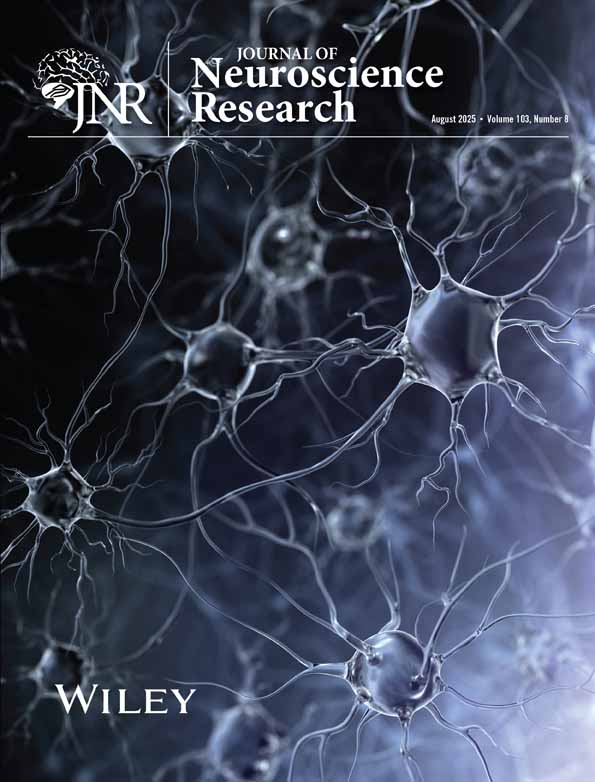Erratum
The Plasma Membrane Calcium ATPase Plays a Role in Reducing Ca2+ Mediated Cytotoxicity in PC12 Cells. Garcia ML, Usachev YM, Thayer SA, Strehler EE, Windebank AJ. J. Neurosci. Res. 64(6):661–669.
In the above-mentioned article, an earlier version of each of the figures was erroneously published with the article. The correct, revised versions appear below.

Expression of PMCA1b and 4b in naïve PC12 cells. A: RT-PCR was utilized to screen PC12 cells for PMCA expression. mRNA was detected for PMCA 1b (430 bp, left panel) and 4b (260 bp, right panel). M, DNA molecular size standards. An arrow indicates the position of 600 bp. B: Western blot analysis utilizing the PMCA4-specific antibody JA9 to confirm the translation of PMCA4 mRNA into full-length protein (about 135 kDa). Arrows indicate approximate positions of protein molecular weight standards.

PC12 cells are vulnerable to calcium ionophore. PC12 cells were incubated with 5 μM A23187 for 24 hr in standard medium or in medium with no extracellular calcium. After 24 hr, the cells were harvested and labeled with propidium iodide and analyzed via flow cytometry. PC12 cells were vulnerable to A23187 mediated increases in intracellular calcium. PC12 cells treated with A23187 labeled at 55% (±2%) compared with vehicle-only (DMSO) treated (41% ± 2%) and naïve cells (36% ± 2%). The effects of A23187 are dependent upon the presence of extracellular calcium. Removing extracellular calcium reduced the percentage of cells labeled to 29% (±2%). Group means were initially analyzed for overall statistical significance via ANOVA. Post-hoc analysis between group means was made via Bonferroni multiple comparisons test. *P < 0.001 vs. no extracellular calcium, DMSO and naïve control cells.

Altered expression of hPMCA4 in a stably transfected PC12 cell clone. PC12 cells were transfected with either hPMCA4b or antisense4, and stable clones were selected via G418 resistance. Total protein was isolated and equal amounts of protein per lane were separated by SDS-polyacrylamide gel electrophoresis. PMCA4 was subsequently detected via Western blot analysis utilizing the isoform-specific antibody JA9. A single clone (4b-clone3) was obtained that over-expressed PMCA4 to approximately 169% of control (A). A clone (AS4-clone5) stably transfected with the antisense construct showed reduced expression of endogenous PMCA4 to 32% of control values (B). By contrast, utilizing the pan-Trk antibody MCTrks, no significant alteration in Trk A expression was detected in AS4-clone5 compared with control cells, confirming the specificity of the antisense construct (C).

Calcium uptake (A) and recovery kinetics from calcium transients (B,C) in PC12 cells. A: 45Ca2+ uptake in the presence of 540 nM calmodulin was measured into microsomal vesicles from control PC12 cells and from AS4-clone5 cells as described in Materials and Methods. The average from two independent measurements ± SD is displayed in nmol Ca2+ × mg protein−1 min−1 as well as percent of control (set at 100%). B: Representative traces from single cells show that [Ca2+]i recovery kinetics are slowed in PMCA4-knockdown clones. [Ca2+]i concentration was measured in fura-2/AM loaded naïve PC12 cells and in cells from 4b-clone3 (4b) and AS4-clone5 (AS). Seventy mM KCl was applied at the time indicated by the horizontal bar. C: Histogram summarizing recovery kinetics from multiple single cell recordings such as that shown in (B). [Ca2+]i recovery kinetics were fit with a monoexponential function and a corresponding time constant was calculated by using a non-linear, least-squares curve fitting algorithm (Origin 4.0 software); the multiple correlation coefficient was higher than 0.99 in experiments from all three clones. Recovery kinetics were determined for 20, 19 and 20 cells from wild type, “AS” and “4b” clones, respectively. At least two coverslips were studied for each clone. The time constant for AS4-clone5 (AS) was significantly greater than that for the naïve PC12 cells and cell clone 4b-clone3 (4b) (*P < 0.05, one-way ANOVA, Bonferroni post-hoc test). The data are presented as mean ± SEM.

Altering the expression level of PMCA4 alters the vulnerability of PC12 cells to A23187. PC12 cells were incubated with 5 μM A23187 for 24 hr and then harvested and labeled with propidium iodide. The percentage of labeled cells was moderately though significantly reduced in PC12 cells over-expressing PMCA4. Cells of 4b-clone3 labeled at 46% (±1%) whereas control cells labeled at 53% (±1%). Suppressing the expression of endogenous PMCA4 enhanced PC12 cell vulnerability. AS4-clone5 cells labeled at 70% (±2%) compared with the control cells that labeled at 53% (±1%). Group means were initially analyzed for overall statistical significance via ANOVA. Post-hoc analysis between group means was made via Bonferroni Multiple Comparisons Test. *P < 0.01 4b-clone3 vs. control and P < 0.001 for AS4-clone5 vs. control; †P < 0.001 vs. 4b-clone3.
The publisher regrets the error.




